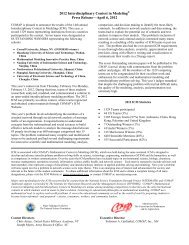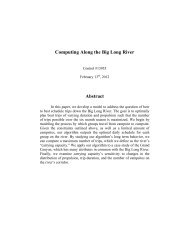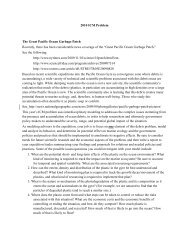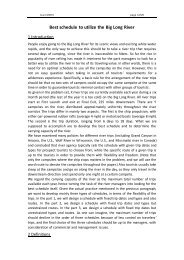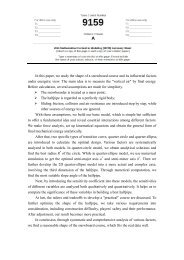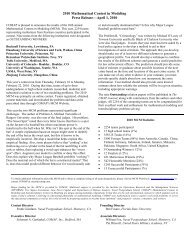Centroids, Clusters and Crime: Anchoring the Geographic Profiles of ...
Centroids, Clusters and Crime: Anchoring the Geographic Profiles of ...
Centroids, Clusters and Crime: Anchoring the Geographic Profiles of ...
You also want an ePaper? Increase the reach of your titles
YUMPU automatically turns print PDFs into web optimized ePapers that Google loves.
Team # 7507 Page 19<br />
Figure 4: Heat Map showing cratering technique applied to <strong>the</strong> crime sequence <strong>of</strong> Peter Sutcliffe<br />
7.1.4 Adjust for Temporal Trends<br />
We would also like our prediction to account for any radial trend in time (<strong>the</strong> criminal becoming<br />
more bold <strong>and</strong> committing a crime closer or fur<strong>the</strong>r away from home). Some research has<br />
suggested that an outward or inward trend in r i may suggest that <strong>the</strong> next crime will follow this<br />
trend[8]. To accomplish this, we let ˜X = X + △r where △r = rn − r n−1 . We note that this<br />
new r<strong>and</strong>om variable, ˜X, gives our intended temporal adjustment in expected value:<br />
E[ ˜X] =E[X + △r] =E[X]+△r<br />
7.2 Results <strong>and</strong> Analysis<br />
To evaluate this first method, we feed it data from three serial rape sprees. Since <strong>the</strong> mechanisms<br />
<strong>of</strong> <strong>the</strong> model were developed before <strong>the</strong>se data-sets were collected <strong>and</strong> debugging was<br />
done with different data-sets entirely, we can consider this a blind test.<br />
In each test case, we remove <strong>the</strong> data point representing <strong>the</strong> chronologically last crime, <strong>and</strong><br />
produce a likelihood surface Z(x, y). As outlined above, we <strong>the</strong>n identify <strong>the</strong> actual location<br />
<strong>of</strong> <strong>the</strong> final crime <strong>and</strong> compute <strong>the</strong> st<strong>and</strong>ard effectiveness multiplier κ s for each case.<br />
Our first test data-set, coded as “Offender C,” is a comparative success for <strong>the</strong> model (Figure<br />
5). With k s = 12.19, it is a full order <strong>of</strong> magnitude better to distribute police resources<br />
using this model instead <strong>of</strong> distributing uniformly (although it should be remembered that <strong>the</strong><br />
absolute size <strong>of</strong> this number is somewhat more arbitrary for our data than it would be if <strong>the</strong><br />
maximum search area had been defined intuitively by a cop familiar with <strong>the</strong> region).<br />
Qualitatively, one can see <strong>the</strong> reason for <strong>the</strong> high κ s : <strong>the</strong> next crime does indeed on <strong>the</strong><br />
surface <strong>of</strong> our ”crater,” <strong>and</strong> falls satisfyingly near <strong>the</strong> isoline <strong>of</strong> maximum height. Never<strong>the</strong>less,







